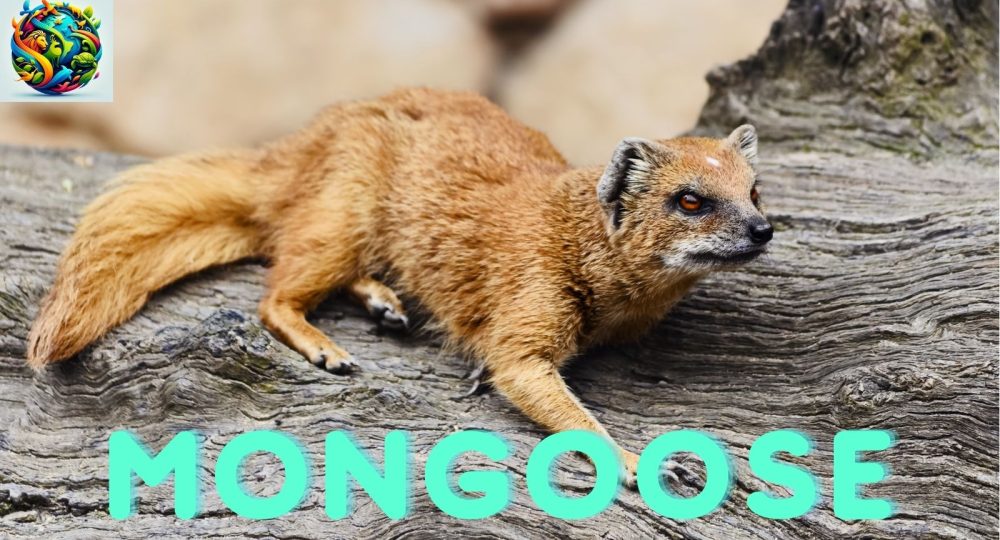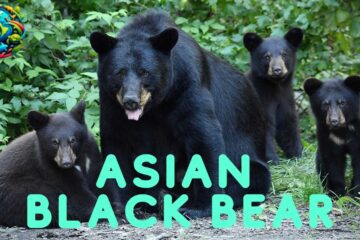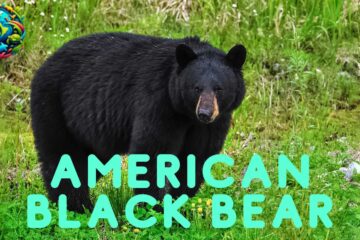Mongoose: Nature’s Intrepid Snake Hunter
Introduction
The mongoose is a small, agile mammal known for its bravery, especially when facing venomous snakes. Belonging to the Herpestidae family, mongooses are found in Africa, Asia, and southern Europe. These animals have fascinated humans for centuries, appearing in folklore, literature, and as symbols of courage and tenacity. This article delves into the captivating world, exploring their habitats, physical characteristics, behaviors, and much more.
Amazing Facts
They are remarkable creatures with numerous intriguing attributes:
- Snake Hunters: They are famous for their ability to fight and kill venomous snakes, such as cobras, due to their speed, agility, and some immunity to snake venom.
- Diverse Species: There are over 30 species, each adapted to different environments and lifestyles.
- Social Structure: Some species, like the banded, live in large social groups with complex hierarchies and cooperative behaviors.
- Diet: They are omnivores, with a diet that includes insects, small mammals, birds, reptiles, and fruits.
- Adaptability: They can thrive in a variety of habitats, from deserts and grasslands to forests and urban areas.
- Mythology and Folklore: They have been revered in various cultures for their bravery and cunning, often depicted as protectors against snakes.
Habitat and Food
They are highly adaptable and can thrive in diverse environments. Their diet is varied, reflecting their omnivorous nature.
Habitat:
- They inhabit a wide range of environments, including savannas, forests, grasslands, deserts, and wetlands.
- They are also found in human-altered landscapes, such as farmlands and urban areas.
- They typically prefer areas with dense vegetation or cover, where they can hide from predators and hunt for prey.
Food:
- Mongooses are omnivores, consuming a variety of foods such as insects, small mammals, birds, reptiles, amphibians, fruits, and seeds.
- Their diet often includes beetles, crickets, ants, termites, rodents, frogs, lizards, snakes, and eggs.
- They use their sharp claws and teeth to catch and kill prey, and they have been observed using tools, such as rocks, to break open eggs or hard-shelled insects.
Appearance
They are known for their distinctive appearance and agility. Key characteristics include:
- Size: Varies by species, with some as small as 7 inches (18 cm) in length, while others can grow up to 2 feet (60 cm).
- Color: Fur color ranges from gray and brown to reddish or yellowish, often with a grizzled or speckled appearance.
- Body: Long and slender bodies with short legs, aiding in their agility and speed.
- Head: Pointed snouts with sharp, curved claws and keen eyesight.
- Tail: Long, bushy tails that help with balance and agility.
Types/Subspecies of Mongooses
They are classified into various species, each with unique traits and adaptations to their specific environments:
- Banded Mongoose (Mungos mungo): Found in sub-Saharan Africa, known for their social behavior and living in large groups.
- Indian Gray Mongoose (Herpestes edwardsii): Famous for their role in fighting cobras, found in Asia specially in India, Pakistan, and the Middle East.
- Dwarf Mongoose (Helogale parvula): The smallest mongoose species, found in eastern and southern Africa, known for their social structure.
- Yellow Mongoose (Cynictis penicillata): Native to southern Africa, often found in open grasslands and semi-desert areas.
- Egyptian Mongoose (Herpestes ichneumon): Found in Africa, southern Europe, and parts of Asia, known for their adaptability to various habitats.
- White-tailed Mongoose (Ichneumia albicauda): The largest species, found in Africa, known for their nocturnal behavior.
Predators and Threats
Despite their agility and bravery, they face various natural and human-induced threats.
Natural Predators:
- Birds of Prey: Eagles, Hawks, and Owls may prey on mongooses, especially juveniles.
- Mammals: Large carnivores such as Lions, Leopards, and Hyenas can be threats to them.
- Snakes: While they often hunt Snakes, they can also fall prey to larger or more venomous snake species.
Threats:
- Habitat Loss: Deforestation, agriculture, and urban development reduce available habitats for mongooses.
- Hunting and Trapping: In some regions, mongooses are hunted for their fur or killed as pests.
- Road Mortality: They often fall victim to vehicle collisions in areas where their habitats intersect with roads.
- Invasive Species: Competition with or predation by non-native species can impact local mongoose populations.
Mating
They exhibit unique and varied mating behaviors, essential for the continuation of their species.
- Breeding Season: Varies by species and location; some species breed year-round, while others have specific breeding seasons.
- Courtship: Involves vocalizations, scent marking, and physical displays to attract mates.
- Gestation: The gestation period ranges from 42 to 84 days, depending on the species.
- Birth and Care: Females give birth to litters of 2-6 young, which are cared for by the mother and, in social species, by other group members. The young are weaned at around 6-8 weeks and become independent after several months.
How They Communicate
They use various methods to communicate with each other, particularly in social species.
Vocalizations:
- Calls: They produce a range of calls, including chirps, growls, and barks, to communicate with group members and signal danger.
- Chirping: Often used by young species to communicate with their mothers and other group members.
Chemical Signals:
- Scent Marking: Used to establish territory and convey information about reproductive status. Mongooses have scent glands that they use to mark objects and each other.
Visual Signals:
- Body Posturing: Used to convey aggression, submission, and readiness to mate.
- Tail Movements: Tail positioning and movements can indicate different behaviors or emotions.
Religious and Cultural Significance
They hold significant symbolic and cultural importance in various societies:
Hinduism:
- Symbol of Protection: In Hindu mythology, the they are often depicted as a symbol of protection and bravery. The mongoose is associated with the god of wealth, Kubera, who is sometimes depicted with a mongoose in his hand.
Ancient Egypt:
- Symbol of Defense: The Egyptian mongoose, also known as the ichneumon, was considered sacred and a symbol of defense against evil, particularly snakes.
Folklore and Mythology:
- Rikki-Tikki-Tavi: In Rudyard Kipling’s “The Jungle Book,” the story of Rikki-Tikki-Tavi, a brave mongoose who protects his human family from cobras, has made the mongoose a symbol of courage and loyalty.
Movies Featuring Mongooses
They have been featured in various films and documentaries, showcasing their unique behaviors and ecological importance:
- “Rikki-Tikki-Tavi” (1975): An animated film adaptation of Rudyard Kipling’s story, highlighting the bravery and cunning of a mongoose.
- “The Gods Must Be Crazy” (1980): Features a comedic scene with a mongoose, showcasing its interactions with humans.
- “African Cats” (2011): A nature documentary by DisneyNature, which includes footage of mongooses in their natural habitat.
- “Nature’s Miracle Babies” (2011): A BBC documentary series that includes segments on the conservation efforts for endangered species, including mongooses.
Pronunciation of “Mongoose” in Different Languages
It is pronounced differently across various languages, reflecting linguistic diversity:
- English: /ˈmɒŋɡuːs/
- Spanish: /mangosta/
- French: /mangouste/
- German: /Mungo/
- Italian: /mangusta/
- Mandarin Chinese: /獴 (méng)/
- Japanese: /マングース (mangūsu)/
- Russian: /мангуст (mangust)/
- Arabic: /النمس (alnimis)/
- Hindi: /नेवला (nevlā)/
Meta Description
Celebrate the fearless mongoose, nature’s intrepid snake hunter. Unveil their amazing facts, diverse habitats, stunning appearances, subspecies, threats, mating behaviors, communication methods, religious and cultural significance, representation in movies, and pronunciation in different languages. Dive into the secrets of these captivating mammals in this comprehensive article.
FAQs
Q: Why are they known as snake hunters? A: They are known as snake hunters due to their agility, speed, and some immunity to snake venom, allowing them to fight and kill venomous snakes like cobras.
Q: Where do they live? A: They inhabit a wide range of environments, including savannas, forests, grasslands, deserts, wetlands, and urban areas in Africa, Asia, and southern Europe.
Q: What do mongooses eat? A: They are omnivores, consuming a variety of foods such as insects, small mammals, birds, reptiles, amphibians, fruits, and seeds.
Q: How do mongooses communicate? A: They communicate through vocalizations, scent marking, and visual signals, especially in social species where cooperation and coordination are essential.
Q: Are mongooses endangered? A: While most species are not currently endangered, they face threats from habitat loss, hunting, road mortality, and competition with invasive species. Conservation efforts are important to protect vulnerable populations.
The fearless mongoose symbolizes bravery, agility, and resilience, playing a vital role in ecosystems and human culture. This exploration highlights their unique traits and behaviors, celebrating the tenacity and complexity of these remarkable mammals
This Article is Sponsored by FINCTOP & TECHETOP







